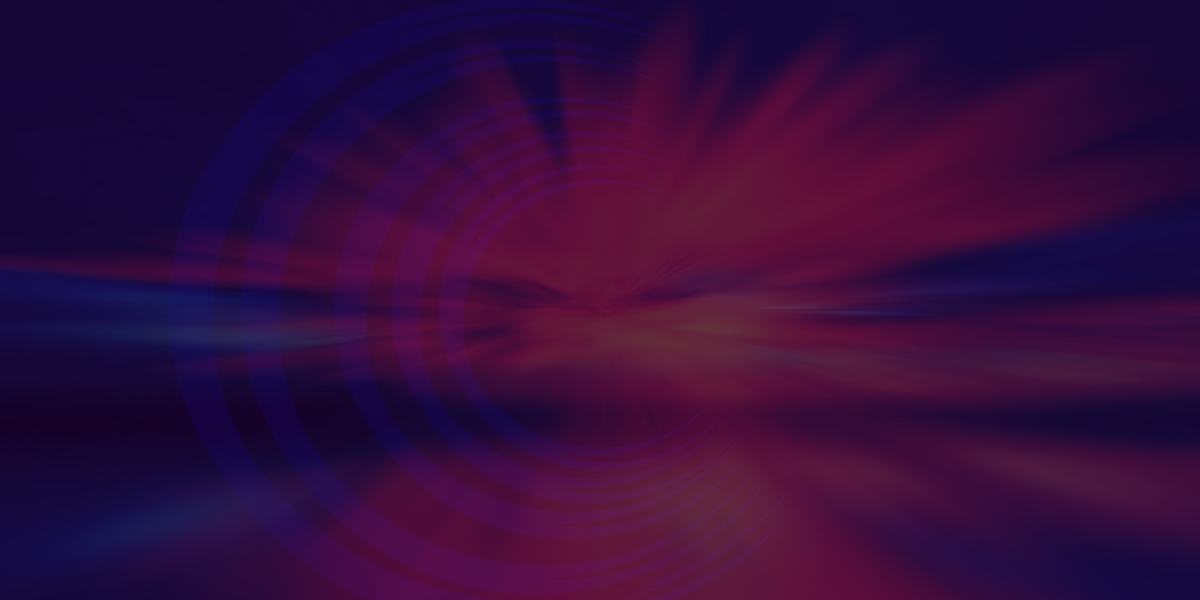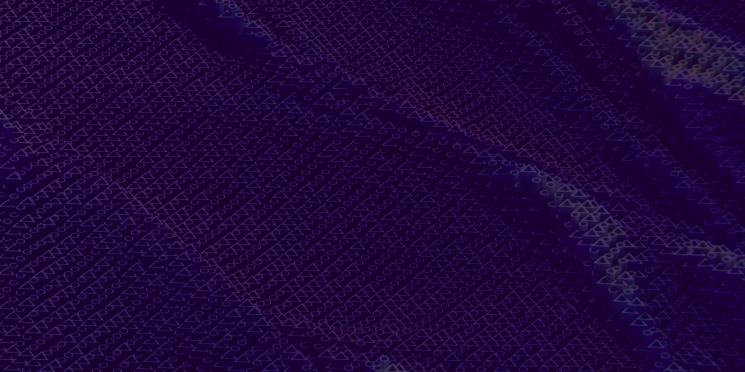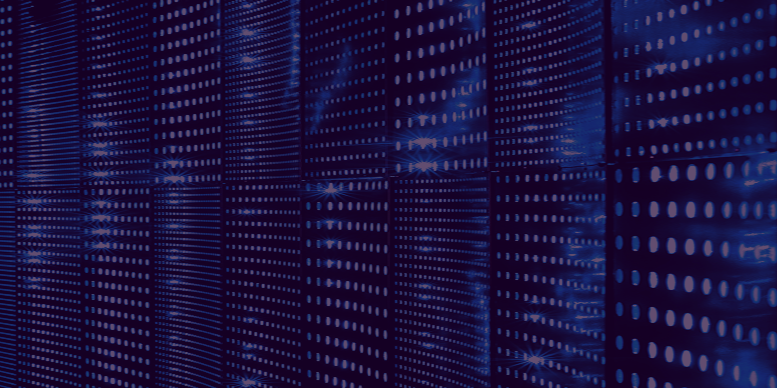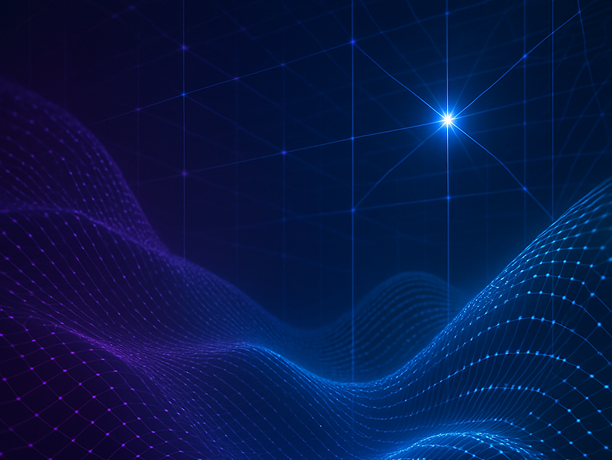“Noise” describes all of the things that cause interference in a quantum computer. Just like a mobile phone call can suffer interference leading it to break up, a quantum computer is susceptible to interference from all sorts of sources, like electromagnetic signals coming from WiFi or disturbances in the Earth’s magnetic field. When qubits in a quantum computer are exposed to this kind of noise, the information in them gets degraded just the way sound quality is degraded by interference on a call. The result is the emergence of error in the information encoded in the quantum bits, or qubits.
Compared with standard computers, quantum computers are much more prone to error - roughly one-hundred-billion-billion times more likely (1020). As a result, a quantum algorithm executing many operations across a large number of qubits is much more likely to fail than succeed. Right now, instead of the trillions of operations that might be needed to run a full-fledged quantum algorithm, we can typically only perform dozens before errors build up and algorithms fail, producing answers that are random junk.
This problem is quite central to the entire field - error is the Achilles Heel of quantum computing. And in response the sector has invested a huge amount of time and effort into devising strategies to combat noise and error in quantum computer hardware. That has in turn resulted in a huge diversity of techniques which go by confusingly similar names - error suppression, error mitigation, and quantum error correction.
Here, we’ll pull these apart so you can understand the critical differences.
Error Suppression
One way to deal with errors in a quantum computer is to prevent them from happening in the first place!
Error suppression (AKA deterministic error suppression or dynamic error suppression) comprises a set of techniques which reduce the likelihood of hardware error while quantum bits are being manipulated or used for memory storage. It uses the physics and techniques of the field of quantum control in order to build resilience against error into the operation of quantum hardware.
For instance, take quantum logic gates. These are the building blocks of quantum algorithms which involve actively manipulating the hardware, typically with short blips of microwave or laser radiation. Using special tricks and tools from machine learning, it’s possible to redefine the machine language for a hardware system to provide the same mathematical operations needed to run an algorithm, but with each exhibiting greater robustness against the sources of error encountered. The same is true while qubits are just sitting idle - the right control operations can be applied to make them more resilient against the external interference they’re subjected to.
This is a bit like giving the qubits a “force field” that protects them from their environments. Just turn on the force field and noise is deflected away, protecting the information stored. While this all sounds like science fiction, the technology is grounded in decades of research and is even closely related to the way MRI works!
Overall there are a great many strategies to implement error suppression for the different kinds of operations and tasks undertaken in quantum computers, but the results consistently deliver huge value. Designing new quantum logic gates can make each operation up to 10 times less likely to suffer an error - something that really adds up as algorithms grow in complexity. By protecting all the operations in a quantum algorithm from error, these strategies can push hardware to its limits, closing the gap between the actual algorithmic performance achieved and the theoretical limits imposed by hardware.
The efficacy of error suppression demonstrated in research on quantum algorithms is quite exceptional, showing up to >1,000X increase in the likelihood of achieving the correct answer in real algorithms executed on a range of hardware systems. This research even showed that Quantum Volume - a measure of hardware capability - could be improved using quantum error suppression strategies, indicating that the hardware itself has effectively become more error resilient.
Error suppression can be baked right into the native Quantum Firmware used to operate a quantum computer, or it can be configured to deliver a completely automated workflow for QC end users to improve the performance of quantum algorithms. It is deterministic, meaning errors are reduced on each and every run of the algorithm, without the need for any additional overhead (see below for further discussion on this overhead for “Error Mitigation”). Turn the force field on, and the hardware is immediately protected.
If you’re an expert, you can explore how to design your own error robust quantum logic gates using Boulder Opal . Or if you’re an algorithm developer, Fire Opal delivers extensive capability in automated quantum error suppression for you to improve algorithms on commercial cloud quantum computers - no settings or configurations to worry about.
Quantum Error Suppression is not perfect, and cannot correct for all errors - especially a rather nefarious kind of error called an “Energy Relaxation” or “T1” error in which a qubit randomly decays - a bit like the way a coral polyp spontaneously inverts itself in coral bleaching. For these kinds of errors we need to actually implement new strategies in the form of Quantum Error Correction...keep reading for more on this!
Error Mitigation
Sometimes in quantum computing we’re trying to estimate the value of a calculated parameter - this is very common in quantum algorithms for chemistry where we might try to calculate the energy levels of a molecule. In such cases errors can creep into both algorithmic execution and the measurement of the quantum computer’s output.
To deal with these issues a number of different strategies have been developed that focus on trying to improve the result via postprocessing. Error mitigation strategies come in many forms and have many names - randomized compiling, measurement-error mitigation, zero-noise extrapolation, probabilistic error cancellation - but they share commonalities around how they are implemented.
All error mitigation strategies broadly involve executing many slightly different versions of a target algorithm and then combining the results to somehow “extract the right answer through the errors”. The modifications applied to the circuit may be random or applied according to a fixed algorithm. The resulting outputs are then combined and postprocessed in order to provide improvement.
We’ve found this to be an incredibly powerful tool in the specific form of measurement-error mitigation, where we can employ special statistical techniques to identify when a quantum computer likely got the calculation right, but the readout failed. In fact, a very efficient form of measurement-error mitigation is a part of Fire Opal.
More generally, the Q-CTRL team’s experience favors quantum error suppression over error mitigation due to much higher demonstrated performance enhancement achieved with error suppression techniques, and the fact that error mitigation carries an overhead penalty. In most cases to get maximum benefits from error mitigation approaches, an algorithm must be run around 100 times with different configurations - this automatically means a 100X increase in quantum compute cost, potentially a very large penalty.
Quantum Error Correction
Quantum Error Correction (QEC) is an algorithm able to identify and fix errors in quantum computers. In QEC quantum information stored in a single qubit is distributed across other supporting qubits; we say that this information is "encoded" in a new logical quantum bit. This procedure protects the integrity of the original quantum information against local hardware failures even while the quantum processor runs.
When the QEC algorithm is executed, special measurements on additional ancilla or helper qubits can indicate when a failure has occurred without disturbing the sensitive information stored in the quantum bits. With this information in hand, a correction can be applied to fix the error that’s been identified. A quantum computation with QEC then consists of cycles of gates acting on qubits, special “syndrome” measurements, error inference, and corrections. In terms more familiar to engineers, QEC is a form of feedback stabilization that uses indirect measurements to gain just the information needed to correct errors.
Remarkably, the entire error-correction cycle can be designed to tolerate errors and faults that occur at every stage, whether in the physical qubits, the physical gates, or even in the very measurements used to infer the existence of errors! Called a fault-tolerant architecture, such a design permits, in principle, error-robust quantum processing even when all the component parts are unreliable. This makes it an exceptionally important concept in the field of quantum computer science, enabling - in principle - arbitrarily large quantum computers to be built with arbitrarily low errors!
There’s no free lunch and this protection comes at a major cost in terms of how many qubits are required. Overall, the worse your noise is, the more qubits you need. Some estimates suggest one could require thousands of physical qubits to encode just one protected logical qubit - that’s a tall order given the biggest systems today typically have only a few dozen qubits. The sheer scale of this overhead and the complexity of QEC is why despite many beautiful experiments, QEC still doesn’t make things better. That may change soon - but not yet.
For an expanded introduction to Quantum Error Correction please have a look at our Advanced Topic, or explore our article in IEEE Spectrum.
The road ahead - combining the best of breed
In combating a problem as challenging and important as reducing errors in quantum computing, we advocate combining the best achievable strategies whenever possible.
Detailed investigations have so far shown that quantum error suppression provides both the best demonstrated benefits and maximum flexibility to combine with both error mitigation and quantum error correction. Adding these concepts together can really deliver results greater than the sum of the parts. More concretely, the fact that QEC is really just a special form of feedback stabilization for a quantum computer makes it an area of tremendous opportunity to combine quantum error correction and error suppression.
Error suppression can deliver important benefits that actually improve the performance and efficiency of QEC - reduction of overall error rates, improvement of error uniformity between devices, improvement of hardware stability against slow variations, and an increased compatibility of the error statistics with the mathematical assumptions underpinning quantum error correction.
In fact, our own experimental research has already shown how combining error suppression with quantum error correction can improve the QEC algorithm itself - they’re a perfect match! So as we seek the best approach to fixing the problem of error in quantum computing, we suggest taking everything the field has to offer in combination.













